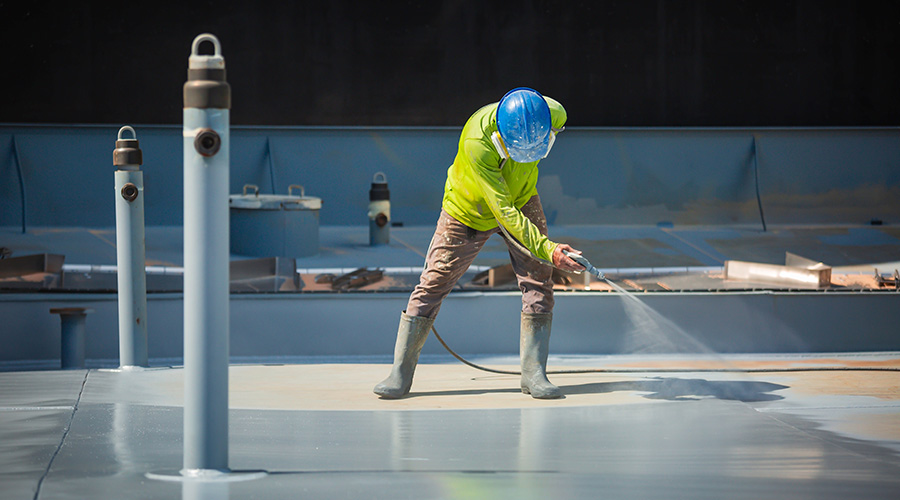Paints and Coatings: Tools Include Brushes, Rollers, Spray Guns
The right brushes, rollers, spray guns and other tools can ensure high-quality paints result in good-looking applications by providing a smooth, even coat that resists wear and tear, requires fewer touch-ups, and is easier to clean.
Surface preparation is one of the most labor-intensive parts of any painting project, but the proper tools can significantly reduce needed labor time. Three typical examples of such tools are:
• a powered rotating fiber disk that removes paint while smoothing the surface for primer
• a heat gun that uses high temperatures to soften the paint for easier removal
• a variety of strippers that chemically dissolve paint, even from irregular surfaces, to speed removal down to the bare surface.
The continuing improvement of paint-application tools has resulted in even greater labor savings. Powered sprayers enable painters to apply coatings continually and directly from the can, as well as avoid the time-consuming step of returning to the can for refills. New sprayer designs also can handle the new, higher-viscosity paints without thinning.
In order of least to most efficient, painters often use one of three roller-painting methods: roller tray; bucket and screen; and pump to roller. Of the first two, the bucket and roller screen is much faster and delivers a better finish without edge ridges.
But either of the first two methods is much slower than the pump-to-roller method. Even with a bucket and screen, the painter has to dip the roller about every 6 square feet. An application that takes eight hours with pump-to-roller equipment would take about 14 hours, or 75 percent longer, with the bucket-and-screen method because workers have to stop to get more paint.
By employing extension tools, painters can save more time and avoid setting up and moving ladders for ceiling or high wall applications. This approach also allows painters to do all or most of the work from the ground.
They also should use disposable drop cloths to protect the floors, equipment, and furniture from preparation and paint debris. They can roll up and dispose of these biodegradable drop cloths quickly, minimizing cleanup time.
Related Topics:













